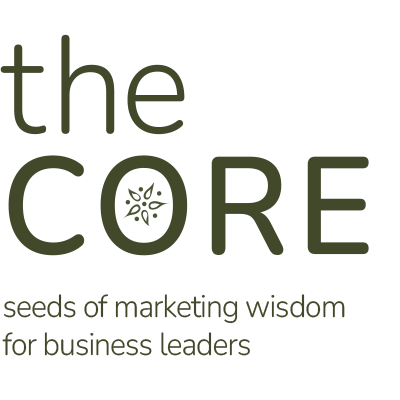Let’s face it. You put a lot of time, energy, and effort into creating content for your audience. As time goes on, it can be deflating and frustrating to see the shelf-life of your content become outdated. But that doesn’t always have to be the case. Finding ways to repurpose your outdated content is a great way to get the most out of your content marketing and be more agile in your marketing efforts.
The 7 Strategies Your Email Newsletter Should Use
When it comes to the basic “blocking and tackling” of effective email strategy in 2022, email newsletters are on the starting line. After all, 81% of B2B businesses name newsletters as their top content marketing strategy. However, the popularity of newsletters often makes it one of the most difficult tactics to deploy. It’s important for every business to consider how their newsletter is going to stand out in the crowded inboxes of their audience.
3 Benefits of Email Newsletters for Marketing
Before we dive into the email strategy for developing an effective newsletter, here are just a few important factors to consider:
1. Newsletters provide a way to educate current and prospective customers.
An effective email newsletter is informative and relevant. It should appeal directly to the subscriber’s interests and cover the topics from the industry. Because of this, newsletters provide your audience with a better understanding and knowledge of your brand in a way that is helpful.
2. Newsletters help you keep leads warm.
Not everyone who visits your website or submits their email address is ready to buy. Newsletters can be a great way to keep potential customers engaged and informed until they’re ready to make the decision to buy.
3. Newsletters can enhance your brand reputation and highlight your expertise.
Newsletters also provide a way to establish yourself as a thought leader in your industry and build expertise. By sharing relevant industry news and providing perspective on important topics for your audience in your newsletter, you become a trusted voice for them.
7 Effective Strategies for Email Newsletters
So how do you create an engaging newsletter that creates momentum for your marketing efforts? Here are seven strategies to consider:
1. Choose an Email Software that Works for Your Brand
There are many email service providers out there on the market and choosing the right one is not easy. While we’ve used several survey platforms to send newsletters for our clients, our team likes the features and functionality that Campaign Monitor provides. The key is to find software that can meet your requirements and can guarantee both high deliverability and quality of your emails.
2. Set the Right Expectations by Letting People Know What to Expect from Your Newsletter
Because of how many emails are sent daily, people are more and more reluctant to share their email addresses. Whenever you’re asking people to sign up for your newsletter, it’s helpful to answer the question “What’s in it for me?”
Helping people recognize the value of subscribing to your newsletter and setting expectations for how you will communicate with them goes a long way in maximizing the ROI of your campaigns.
3. Use a Clean and Consistent Template
You want to make sure your newsletters are skimmable and easy to read. Whether you use an out-of-the-box template or get one created especially for your brand, using a consistent design will help your brand achieve a layer of cohesiveness and flow.
4. Make Sure Your Subject Line is Compelling
You only get one chance to make a great first impression with your subject line. According to research, 64% of readers make the decision to open an email based on the subject line alone. Here are a few different subject lines you can use to elevate your email newsletters.
5. Consider Adding an Emoji to Your Subject Line
At Green Apple, we’ve found emojis help our clients’ newsletters stand out in a crowded inbox. One study analyzed over 9K email campaigns on mobile and found that subject lines that included emojis increased email open rates by 1,071% on Android and by 662% on iOS.
6. Make Your Newsletter Helpful & Informational More than Sales-Driven
Newsletters are better for cultivating customer loyalty and brand equity than they are for hard selling. When it comes to the content you create, it’s important to embrace the mindset of “always be helping.” One way to integrate this into your newsletters is the 90/10 rule: 90% informational content, 10% sales material. With the right balance, less is more and the educational material will lead to more sales than product copy.
7. Continually Analyze & Test to Find What Works
As with any marketing tactic, in email strategy, it’s important to constantly test and analyze your newsletter to see what works. You want to track the metrics that indicate whether or not your newsletter is working and test new ideas along the way. This includes testing out different strategies for send date, layout & design, calls-to-action, etc.
Email newsletters might be something we’re all familiar with, but it can challenging to create a successful one for your own brand. We hope these insights and strategies help you develop a newsletter that delights subscribers and creates momentum for your marketing efforts.
Does Your Company Need TikTok?
Should your brand be on TikTok? The answer to this question, like all marketing strategy approaches, varies widely based on the brand you’re trying to promote. Diving into a new platform can give you an advantage, but an anemic posting or uniformed content creation may do more damage to your brand integrity than not engaging at all. Above all: you shouldn’t be on TikTok simply to be on TikTok. Instead, you should analyze your audience, assess your brand identity, and consciously decide if marketing on TikTok can help you increase your revenue or your brand’s reach. As you make that decision, here are a few factors to consider.
Consider TikTok For Your Brand if You Have a Young Target Audience
A full 47.4% of TikTok’s users are under the age of 30. If that demographic is your target audience, you should consider having a presence on TikTok. If you’re not yet ready to dive in, you can create an unbranded investigatory account to gain awareness of and facility with the platform and to begin following other users. If you have an intern or a younger worker on staff, you may want to tap them to start the account or conduct research on how you could utilize the platform. This person could also provide an audit of your account if you’ve already established one.Consider TikTok If Your Brand Is Highly Visual
Note that the word here is visual, not visible. A visual brand is any brand that can promote itself effectively through videos, which is TikTok’s primary content type. B2C products have the upper hand on TikTok, but B2B products are in the running as well. Everything from balloon sculptures, to food, drink, and clothing brands are easy to build content around. Service-based are harder to showcase, but not impossible. A skilled content creator can make service-based TikToks that engage viewers as well. Party planners, financial planners, and automobile detailers can all share their businesses on TikTok.Consider TikTok if Quick Tips are your Go To
Some brands lend themselves to quick tips that are easily captured in video. The possibilities here are myriad. Do you manufacture a new green cleaning brand that can give quick tips on efficient tidying? Are you a food product brand that can be used in easy, visually appealing recipes? Or do you own a skincare brand that can offer a moment of serenity as users scroll through videos? Whatever your brand, if you can illustrate its efficacy quickly via a playful video, TikTok might be the social media platform for you.Consider TikTok if You Could Benefit From Influencer Marketing
As is the case with Instagram, influencer marketing is a huge part of the TikTok ecosystem. While direct content from brands isn’t always welcomed by Gen Z, subtle nods to your product or service via influencers are expected. Using influencer marketing can get your brand in front of a new generation of eyes without the need for heavy-handed marketing techniques.Intimidated by New Platforms? Let Green Apple Strategy Lead The Way
Our marketing assessment can help you decide where to put your marketing dollars – and which approaches might have the greatest ROI. From blogging and SEO to PR and social media management, Green Apple Strategy can craft a marketing approach to help you attract and retain qualified leads. Reach out to us today for a consultation.Our Readers’ Favorite Blogs of 2021
When it comes to powerful marketing tools, we’re a huge proponent of the power of blogs. A successful blogging strategy can provide a huge SEO boost for your website, scale up your Google ranking by providing more content for the algorithm to sort, and can strengthen your brand identity. We practice what we preach, and our 2021 blogging strategy has brought us an increase in website visitors, new qualified leads, and content to use on several different marketing channels. Here are our readers’ favorite blogs of 2021:
1. Four Factors for Creating a Customer-Centric Culture
In this blog, we give our top suggestions for building a brand culture that focuses on bringing your best to your customers. By animating your team, centering on your purpose, and understanding who you’re serving, you can bring unparalleled experiences to your clients and customers.2. Meet Our Owner/Chief Strategist Samantha Pyle
Our second most popular blog this year served as a quick introduction to Green Apple’s leader Sam Pyle. Her extensive experience in marketing and PR gives her the vision and clarity to guide our team. We love working with Sam every day. Through this introduction, you just might see why!3. 7 Key Elements of Eye-Catching Content
There’s no question: more eyes on your content means more leads and more engagement. How can you craft content that captures and keeps attention? These seven tips can serve as a guide when you’re planning future content.4. Enneagram and Marketing: How Type Ones Accelerate Your Strategy
We love all that Type Ones bring to our team, including organization, prioritization, and an eye for detail. Type Ones can also be a significant asset when you’re building a marketing strategy—here’s how they can activate your approach.5. Green Apple Goes Hybrid
This update on our move from in-person to a hybrid work model explores the benefits of switching to a more flexible working model, especially as the workplace changes in response to the pandemic.6. Enneagram and Marketing: The Creative Beauty of Type Fours
Types Fours are creative, original, and insightful. They’re wonderful for bringing new ideas to a team’s approach and process, which makes them valuable in any industry—including marketing. Take a deep dive into all that the Enneagram Type Fours can offer in the workplace through this blog.7. Enneagram and Marketing: How Type Threes Move Mountains
It’s not a surprise that another blog on the Enneagram and marketing made it on our top ten list. This article explored how Type Threes energize and motivate when they’re implementing a marketing strategy. Our fearless leader, Sam, is a Type Three (as is our Marketing so we get to see (as is Senior Content Strategy, Skylar). We love to watch how Type Threes bring the best of their talents and skills to marketing.8. 5 Books to Read When Looking for Your “Why” in Marketing
There’s so much research out there that suggests that purpose is essential when it comes to finding motivation for your work. The same is true in marketing. In order to successfully share the benefits of your brand, you’ve got to dig deep into why you’re in business, what you can offer your customers, and how your purpose animates all that you do.9. How Enneagram Type Sevens Bring Energy to All they Do
Enneagram Sevens are known for their extraversion, optimism, and verve, and they bring all these traits to the workplace as well. If you work with a Type Seven, they’ll feel a natural draw towards processes they can reimagine, clients they can woo, or venues where they can serve as a spokesperson for your brand.10. What Makes an Enneagram Type Five a Marketing Asset
At Green Apple, we use the Enneagram for team building, during the interview process, and to understand what roles and responsibilities are a natural fit for our team members. This guide to Enneagram Type Fives explores a Type Five’s drive for mastery and excellence, and how that can benefit a marketing team.Harness The Power of Blogging For Your Brand
Want to learn more about how a keyword-driven blogging strategy can activate the power of your brand? Let Green Apple Strategy craft an innovative approach to your brand’s blog so that you can start targeting and attracting customers today. Reach out to us today for a consultation.How to Create a More Customer-Centric Culture
It’s obvious when companies genuinely care about their customers, not just as purchasers but as people. As a customer, you want to feel valued and reassured that your purchase, experience, or service is satisfactory. Building consistent and reactive communication helps you develop long-term and loyal consumer relationships. So, how do you do this? You put the customer first. A customer-centric culture revolves around making the customer happy before, during, and after their purchase, ultimately earning established loyalty and higher growth. This strategy means listening to your customers and implementing what you learn from them. Not only does this practice make consumers satisfied, it helps you stand out from the competition for potential customers. While there are several methods of the approach, we’ve gathered a top five for you to review while you begin to design a customer-centric approach in your organization.
1. Invest In Your Team
Imagine you want to make a complaint about a bad experience. If you encounter a less-than-helpful person when expressing your concerns, you likely won’t return to that business. That’s why you want to hire employees who understand the value of customer relationships.
While these customer-facing individuals do drive revenue based on customer experience, that’s not their primary duty. More than anything, team members who work directly with customers ensure the customer is understood and satisfied with their experience. To avoid disconnection between customer service and other departments, strategically merge other divisions or schedule regular meetings. Customer service shouldn’t be only certain employees’ responsibility– it should be everyone’s. Though customer service isn’t the only factor in adopting customer-centric ways, hiring and collaborating with excellent people are guaranteed ways to make your customers feel more secure.
2. Have Empathy for Your Customers
Responding with empathy is essential when developing a successful customer-centric approach. These responses consist of implementing progressive thinking, understanding emotional needs, and genuinely caring about the individual’s concerns. Empathy is a learned and valuable skill for your team members to possess.
According to a PwC study, only 38% of U.S. consumers say the employees they interact with understand their needs. That is a monumental opportunity for your company to specialize in empathetic proficiencies and automatically outshine your competition.
3. Be One Step Ahead
When planning your customer-centric strategy, think of previous customer experiences, including:
- Frustrations
- Clarity issues
- FAQs
- Miscommunication
- BONUS: “What If” scenarios
As a team, compile these trouble spots and either solve the hiccups or list the solutions on your website so your existing and potential customers can have their questions asked as soon as possible. You learn these areas of improvement by listening to your customers and are rewarded by their appreciation and extended business.
4. Prioritize Your Relationships First
Did you know that customers who have a good experience are 5X more likely to recommend your product or service than if they have a very poor experience? Relationships and customer satisfaction matter. Whether it’s fun communication through social media interaction or substantiating trust in B2B discussions, you want to know what your customers’ needs and priorities are before all else. Maybe it’s the way you respond or how you market toward products that create customer attraction to your brand. Research and listen to what your audience specifies; you’ll continue to build mutually beneficial relationships.
Ready to Build Your Customer-Centric Culture?
If you’re interested in learning more about how your business could thrive initiating a customer-centric business strategy, contact us today for a consultation! We’re excited to investigate the precise approach for you and your audience.
6 Guidelines for Planning a Virtual Event
At this point in time, half of all businesses conduct virtual sessions 20 to 30 times a year. Virtual events are low friction, with fewer barriers to attendance. (No more driving in the snow or paying for parking.) They can also extend the reach of your event far beyond your local circle while having almost no overhead costs. Online events are also recordable, which is incredibly valuable from a marketing collateral perspective. Key moments from an event can be repurposed and used on social media channels to bring additional attention to your brand. If you want to optimize the events you’re already holding, or dive into the virtual space for the first time, we have a few tips for planning a virtual event.
1. Promote Your Virtual Event
In marketing, a multi-pronged approach is always best. Make use of your active email list by sending out an engaging email explaining the value proposition of the event. Advertise the virtual event on social media channels, and consider providing an incentive to attend. (Gift cards are perfect for this since they’re easy to send and easy for participants to use!) Ideally, you should build a separate landing page on your website with a sign-up functionality so that you can point potential attendees to it. Drop the link into any promotions you do so that guests can RSVP easily. This will not only give you an accurate headcount for the event, but it will also help you make the event more secure by tying invites directly to RSVPs2. Set an Agenda
Even if you’re a freewheeling type, virtual meetings aren’t the right time to indulge your spontaneous side. If participants have a sense that you don’t have a game plan, you may lose out on their attention and their buy-in. You can even send an agenda out to attendees to keep them informed about how the event will progress. One tip: keep your timestamps loose unless you’ve had several dry runs. A simple order of events is enough to serve as a guideline.3. Prep Your Audience
While you may be busy with administrative preparation and planning, priming your audience or participants for the event can really pay off. This pre-involvement can be comprised of sending out a poll in advance of the event, collecting comments they may want to share, or gathering questions for a Q and A. If you’re really feeling ambitious, consider sending out swag or small branded gifts to increase both event buy-in and attendance rates.4. Check Your Tech
Running a tech rehearsal of your event can help you prevent long silences, pixelated images, weak connections, or other online event woes. The apparent ease of a virtual event can trick some event coordinators into scaling back their planning. (Don’t I just open up my laptop and go?) In reality, because of all that can go awry in a virtual event, meticulous planning becomes even more essential. When you’re doing a dry run of the event, double-check the functionality of technology for all the hosts, including mics, lighting, and sound. You’ll also want to check the permissions of the platform you’re using. Decide if you want to auto-mute participants or require video. For presentation elements, check screen sharing and hosting capacities. Finally, check your event link to make sure it directs to the correct location. While it may feel tedious, a technology dry run is the best way to ensure a professional, streamlined virtual event.5. Secure Your Event
Incidences of Zoombombing have dropped since online event platforms have beefed up security. However, unwanted or unexpected intrusions are the type of occurrence that can completely derail an otherwise successful event. To help prevent this, set a password for every single event you host. You can also limit screen sharing to administrators and auto-mute participants so they can only unmute with administrative permission. If you do use the auto-mute function, you should assign a specific team member to unmute participants as necessary. This job will require their full attention, so it should be their sole task during a virtual event.6. Send Out Your Event Link!
When you’re ready to launch the event, it’s time to send out the event to link to participants. While there are several schools of thought on when to send an event link out, we don’t advise sending it out too far in advance. Email links sent out too early will get buried in the crunch of an already full email inbox. Participants may have difficulty locating the link when they’re ready to attend the event. Links can also be forwarded to anyone via email. If you want to add another layer of security to your event, sending out a link no more than 30 minutes to an hour before the event can help you keep your guest list exclusive. Sending out a link right before an event can also serve as a gentle reminder to those who have push notifications turned on.Green Apple Strategy: Innovative Marketing In Every Industry
Our clients have used virtual events to connect to their customers and promote their brands. It’s one tool of many that can be used to enhance your marketing goals. If you’re ready to enhance your marketing goals, connect to your audience more efficiently, and increase your brand awareness, contact Green Apple Strategy. We can help you build an innovative marketing strategy to attract and retain qualified leads. Reach out to us today for a consultation.The 4 Best Ways to Capture Your Audience’s Attention in the New Year
Ten seconds doesn’t seem too long, right? Based on the latest study, humans have an average attention span of eight seconds. On a first date, you usually tend to give someone the benefit of the doubt if things aren’t working out exactly to your standards. With social media lifestyles today, though, there’s no obligation to give anyone even an extra second of deliberation if the content is subpar or unreliable. To keep your audience engaged, you need to connect with them instantly, so they don’t lose interest—no second chances or “dates.” So, how do you stand out with your target audience? Regardless of the type of platform that you’re utilizing to gain listener retention, here are the four best ways that you can capture your audience’s attention in your new year marketing strategy.
Speak to Your Audience’s Pain Points
For your audience to refrain from daydreaming or continue scrolling, they need to know that you are undoubtedly speaking to them. When you know your audience, you know their needs, anxieties, intentions, etc. When you focus on your target’s pain points, you confirm that you have solutions they need, which further results in increased view time, subscriber or follower rate, and customer loyalty. Today’s society and algorithms don’t allow non-relatable content to take up our space or time. Get to your point quickly by being specific, inspiring, and genuine to grab their attention immediately.
Share Relevant Content
By relating to your ideal client, you build reliability, likability, and certainty. Put yourself in the shoes of your ideal customers or audience so that you better grasp what matters to them, therefore, what they want to see or experience. Consider these questions about your audience when creating your content calendar:
- Why did they attend your event?
- How did they receive your targeted ad?
- What makes them interested in your content?
- Why are you the solution they need?
By answering these questions and determining the basis of why your audience is “following” you, you’re able to speak to their emotions and cultivate connections, better yet, relationships. Test out relevant, inspirational quotes, current events, success stories, industry statistics, or even humorous content to see what your audience favors. According to Forbes, customers with a positive emotional association with a brand are 8.4 times more likely to trust the company, 7.1 times more likely to purchase more, and 6.6 times more likely to forgive a company’s mistake. As you can see, once you capture your customer’s emotions, you also gain their loyalty.
Help them Imagine the Possibilities
Using the word “imagine” or placing your audience in “what-if” scenarios automatically transports them to your desired mindset. It allows them to mentally see themselves in an imaginary world, whether you choose to make that a good or a bad place.
If you’re working on promoting your services for B2B interactions, you could ask, “What if your revenue could grow x amount in 6 months?” or “Imagine having x purchases made by the end of the year.” Positive options like these give your audience something to look forward to with their future with you.
Enhance your Visual Content
People process visual content more quickly than they process words. Additionally, 67% of consumers consider clear, detailed images to be very important and carry even more weight than the product information, full description, and customer ratings.
If you’re strategizing your social media content, create enticing graphics that speak to your target audience. Better yet, incorporate videos that tell a story. According to HubSpot, 54% of people want to see videos more than any other content in the future. Develop a connection with your audience first thing by giving them the content that they want to see.
Ready to Jumpstart Your Marketing Strategy?
The truth is, our attention spans aren’t getting any longer. Try implementing these strategies so that you can stand out from your competition and win over your target audience.
If you’re looking to enhance your marketing goals, connect to your audience more efficiently, and increase your brand awareness, Green Apple Strategy is here to help. Contact us today for a consultation.
What Your Marketing Team Wants You to Know
So, you’ve hired or are thinking about hiring a marketing team. How exciting! Marketers are experts in organic website growth, targeting, customer journeys, algorithms, etc. to help your business escalate and stand out from the competition. You’ve answered the baseline questions, and you’re ready to enhance your marketing efforts. We’ve gathered a few tips from the marketer side to help you gain the absolute most out of your working relationship. Here’s what your marketing team wants you to know.
Agencies are an Extension of Your Team
When you hire an agency, you’re adding to your team. These are professional and skilled marketers who help you with strategies, measurement, content, and more. You need to have open communication and keep them frequently updated. Sharing what’s on your marketing agenda will introduce creative brainstorming processes, establish comradery, and save you time. Sample information to share:- Company events
- Internal marketing strategies and goals
- Target audiences
- Internal and external company changes
- Industry norms
Understand What Your Marketing Team is Doing
If you’re currently working with an agency or have an internal specialist, you have likely established the foundation of your goals, visions, and target audiences. That’s great! However, you don’t need to leave it at that. Keep yourself educated and informed about what is behind their strategies and judgments. Actively contribute your thoughts and knowledge about your industry. You’re an expert in your company, and your marketer is an expert in helping your company succeed. Truly grasping the process helps you long-term when establishing future objectives and goals–not to mention grants you confidence in your decisions and approvals.Don’t Be Afraid to Ask Questions
Yes, communication is key. If you have questions about certain decisions, proposals, or processes that the marketer is executing, ask them! You hired them, and they want to help you understand how the strategies work and what the results mean for your business. Marketers don’t hesitate to find out what your pain points are—don’t be afraid to ask what you want to know!Results Don’t Happen Overnight
While marketers would love to deliver your expectations immediately, it’s not that simple. Behind the success is deliberate campaign building, extensive researching, tailored design, and, in some cases, trial and error (especially in strategies such as inbound marketing). Include key team members early on during the onboarding process so that your marketer can hit the ground running with solutions. While there’s no guaranteed timeline for success, beginning with critical details or concepts helps save time and money in the long term.Not All Marketing Plans are The Same
While it’s good to scope out similar businesses’ marketing efforts, don’t obsess over what other companies are doing. You shouldn’t tell your marketer to implement a campaign just because you see your competition doing it. If you’re working with an agency specifically, each of their clients has unique marketing plans depending on several factors. Some of these may include:- Marketing goals
- Business needs
- Company values
- Allocated budget
- ROI expectations
- Target audience
Invest in a Marketing Agency, and They’ll Invest in You!
Odds are, you interviewed at least a couple of candidates or agencies throughout the hiring process and you decided on your final choice for a reason. Whether you were impressed by their case studies, felt a genuine connection when chatting, or liked their answers to your concerns, you wanted them as a part of your team. You’re investing in them, and they’re investing in you by driving results through SEO, sales funnels, social media marketing, website design, etc. Once any concerns are addressed and the onboarding process is complete, your marketing team or individual will know what direction to take, and with open communication, clarity is high.Your Marketing Plan for 2022: 7 Attainable Goals
With the holiday season quickly approaching, it’s time to start preparing your 2022 strategic marketing plan. The new year is a perfect chance to start fresh, with innovative ideas, new traditions, and creative campaigns. Before you determine what needs to change, what objectives should be established, or what goals you want to meet, take a look at these seven attainable goals to add to your marketing plan for 2022. These key components just might make this one your most successful year yet.
Include Your Team in the Process
It’s essential to involve your team in company decisions, especially the choices that will directly impact them. Whether it’s a financial, communications, or company-wide plan, you don’t need to take on this task alone.
Inviting your team to collaborate with you creates a more collaborative environment. Plus, incorporating your employees in big decision plans builds company trust, morale, camaraderie, and reliability. Everyone brings a new perspective, and it’s critical to engage them.
Construct a SWOT Analysis from 2021
Objectives and Key Results (OKRs) are essential when planning your next move. Without the deep dive into your previous campaigns and strategies, you’re unable to determine why something was or wasn’t successful. By conducting your strengths, weaknesses, opportunities, and threats (SWOT) analysis, you’re unveiling endless growth possibilities and positive outcomes.
Here are some examples of each to ask your team:
- Strengths:
- Where do we excel?
- What are our assets?
- What do customers like about us?
- Weaknesses:
- Where are areas of improvement?
- What complaints do we receive from customers, employees, or stakeholders?
- How much debt do we have?
- Opportunities:
- What trends may positively impact our industry?
- Is there a niche that we should be targeting?
- How is the market changing?
- Threats:
- Could specific regulations discount our company?
- What methods have our competitors tried that we have not?
- Where can our weaknesses be exposed?
Review Your Mission and Vision Statements
Everything you do should reflect who you are as a company. Ask your team and yourself questions like, “What do we value? What differentiates us from the competition? Why do we exist?” It can be easy to get lost in trends or follow others but don’t forget about your originality and what makes you stand out from the competition.
Your annual plan should heavily incorporate goals and concepts that demonstrate what makes you, you. When conducting a team meeting, request feedback on what they admire most about the company, why the values are substantial, or where the gaps are to be more purposely filled.
Develop Your 3-5 Year Strategic Plan
While it may seem like overkill, you should always be thinking about what your next step is. (Spoiler alert, your competition is already doing it). Think of your prospective finances, budget, timeline, business size, and more to keep you on track for success.
Brainstorm methods for increasing your revenue, committing to your values, executing SWOT findings, and expanding your goods or services. No goal is too big, and you can always readjust next year!
Make Your Goals and Objectives Clear
Write or type your goals and objectives for each category you’re preparing and have a timeline for each action item. Including Objectives and Key Results (OKRs) in your initial planning will help keep you accountable as often as you need, whether that’s month-to-month or quarterly.
Examples in Action:
- Goal: Grow our social media following
- Objective: Increase social media audience by 30% by April 1, 2022
- Goal: Strengthen employee morale
- Objective: Increase employee feedback survey to a 90% average by 2023
- Goal: Expand our client list
- Objective: Increase subscription rate by 60% by June 15, 2022
Establish Metrics for Success
If you do not already have Google Analytics, Google Tag Manager, and Google My Business, be sure to implement them! These resources do not cost you anything to configure, and they give you valuable information that can help gain traffic, leads, and revenue.
Don’t forget that surveys are also a fantastic method to gather feedback. Whether your plan is for external or internal communicators, questionnaires are immediate results where you can discover if something new or existing is working or not.
Break Down Your Priorities
In order to drive your results and keep your team more motivated, break down your priorities into annual and quarterly tasks. Your annual tasks are your higher-level, bigger-picture goals that you want to accomplish. Once you develop your yearly milestones, hone in on quarterly projects that will help you attain them. Three quarterly projects are a good rule of thumb to start and work your way from there.
Creating Your Marketing Plan for 2022?
Green Apple Strategy is a full-service marketing agency that connects clients to communications experts, conducts valuable strategies, and delivers quality work. Are you ready to begin your 2022 strategic planning with our team of specialists? Connect with us today to schedule a consultation and start implementing your best year yet.
Hiring a Marketing Agency: The 7 Questions You Should Ask
Searching for the right marketing agency is a process. We understand—there are a lot of options. How can you know which one is the best? Like any relationship, they need to earn your trust, and you want to feel confident before selecting the right one. Before you grant them the power of connecting with your audience, spending your marketing funds, and accessing your client information, you need to feel assured in your decision. To make the process easier, we assembled the top seven questions you should ask your contenders before hiring a marketing agency.
1. What Are Your Industry Specialties?
Are you a B2B or B2C company? Do you have a niche? While some marketing agencies don’t promote specializing in one area, discussing their most popular industries or projects is worth mentioning. If you want to improve SEO, and the agency focuses primarily on media relations, be sure to keep your goals in mind and not settle if you want an agency that has more experience in your current priorities.
Having conversations about common client types also allows you to ask if they are currently working with any of your competitors. Knowing possible conflicts of interest at the beginning will prevent potential development or implementation roadblocks that could negatively impact your service.
2. How do you Communicate with Clients?
One of the greatest benefits of working with a marketing agency is having insight into marketers’ perspectives. However, you want to be sure that these suggestions and ideas are being effectively communicated with you.
Even if you’re new to agency business, you have an idea of how often you need updates or what your communication preferences are. Asking for reporting and dialogue habits will help determine if that’s what you want in an agency partnership. Most agencies will listen and correspond to your preferences. That being said, it will be helpful if your priorities align. That way, both sides are comfortable, resulting in more effective processes and results.
3. How Much Will This Cost?
Yes, talking about money can be uncomfortable. However, these conversations are necessary early on to determine your options. You don’t want to go with the least expensive option because they’re the cheapest, and you also shouldn’t proceed with the most costly if there’s no valid reasoning.
Describe what you want and ask them what that range looks like, but continue to dig beyond that. Determine how pricing is structured, what resources they’ll utilize, what percentage goes toward efforts vs. billing, etc. Once you have the numbers you’re looking for, compare with a few other finalists and determine what seems the most valuable to you.
4. What Do I Own before Our Contract Ends?
There are some instances where the client does not own any of the content that the agency developed for them. This could include photography, graphics, coding, or other branded resources that you may assume are yours. It is imperative to discuss this information upfront so that you know exactly what you are agreeing to. Just in case the relationship or project goes awry, you want to know what is legally yours to avoid issues.
5. Who Will I Be Working with Directly?
Building a foundation with your leading account holder(s) is beneficial for communication, expectations, and trust. Asking who you will be working with allows you the opportunity to research the individuals on LinkedIn and discover their professional background, including experience and longevity. While newer executives shouldn’t be discarded, it may give you peace of mind to find senior team members who will assist you with your account.
6. Can I see Your References?
Just like when you’re shopping online or deciding on a restaurant, reviews and photos give you what you need in your decision-making process. In your agency decision process, request case studies, testimonials, and examples that they find valuable. If ROI is important to you, ask specifically for projects with metric-centered results, like audience growth and CTA conversion. If you’re re-branding or need graphic design assistance, focus on visible transformations, like logo or website portfolios.
7. What Are Your Expectations of Your Clients?
Is there a limit on revisions? Are there certain times that are off-limits? When is an appropriate turnaround time for approval? Talking about expectations for you as a client helps you distinguish how much or little you want to be involved or if your priorities coordinate.
At the end of the day, you’re the client, and they are working for you. If their expectations aren’t reasonable for you, don’t settle. There are plenty more fish in the sea.
Bonus: Ask yourself: What does my gut say?
We sometimes tend to ignore gut feelings, and we usually regret that. Maybe an agency looks good on paper, but you lack the chemistry with your account executive. Don’t dismiss your intuition, even if your brain is thinking something else.
Throughout the process, you’ll learn the agency’s values, culture, and leadership, and you will quickly find out if there are certain details that you can’t get past. Trusting your instincts will only lead to better opportunities.
Thinking About Hiring a Marketing Agency?
Hiring a marketing agency involves many factors, and it can be daunting signing the dotted line. We want you in the right marketing hands just as much as you do. Green Apple Strategy helps companies strategically tell their stories and successfully implement their goals through our comprehensive set of services. Schedule a consultation today. We would love to see if we’re the right fit for you!












